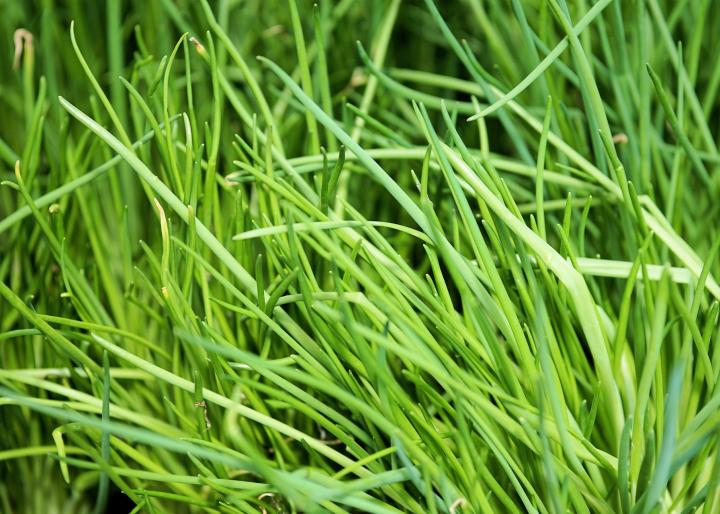
Planting, Growing, and Harvesting Chive Plants
Types
The two species of chives commonly grown in home gardens are common chives (Allium schoenoprasum) and garlic chives (A. tuberosum):
- Common chives consist of clumps of small, slender bulbs that produce thin, tubular, blue-green leaves reaching 10-15 inches in height. The edible, flavorful flowers may be white, pink, purple, or red, depending on the variety. They can be grown in Zones 3 to 9.
- Garlic chives (also called Chinese chives) look similar to common chives, but their leaves are flatter, greener, and get to be about 20 inches in height. As their name suggests, their leaves have a mild garlic flavor (bulbs are more intense). Flowers are white, and are larger and less densely clustered than those of common chives. Garlic chives are not quite as cold-hardy as common chives, so they are recommended for Zones 4 to 9.
Recipes
ADVERTISEMENT
You mention that chives repel aphids, but anyone who has grown chives knows that they (as well as other allium plants) are a magnet for black aphids. I think it is a mistake to not note aphids as a common pest of chives and tout chives, instead, as a panacea for aphids. Chives are still worth growing, but novices should be forewarned. (I get rid of the aphids simply by running the allium blades between my fingers and squashing them. They can then easily be washed off with a gentle stream of water.)
Do chives have an aroma when they are growing? I love the smell of “wild onions”, what I call them anyway. Was wondering if chives are similar?
Hi Gary,
The strength of the scent varies from one variety to the next, but chives do have an “oniony” aroma while growing.
Cheers,
Joe Bills
Associate Editor
OFA
I pick the blossoms at their peak and put them in a jar with vinegar. It makes a wonderful flavored vinegar and looks beautiful. I give them as gifts.
Can I grow chives on a hill where the soil is dry and not deep. What do I need to insure the seeds do well. Do I need to add any fertilizer when planting
Dear Marjory,
Thanks for your note. Chives are a wonderful perennial herb once established. The spot you describe could support chives if you keep it watered. Chives like full sun best, and moist well-draining soil. To start from seeds, we recommend starting chive seeds indoors 6 to 8 weeks before the last spring frost. (See local frost dates.) Transplants need good growth before being set in the garden. If you are sowing outdoors, do so as soon as soil is workable; they can take a few weeks to germinate, and prefer soil temperature to be between 60º and 70ºF to do so.
—The Editors
Can I plant chives in a container and bring inside in the fall?
Yes I took am curious if you can bring potted chives in for winter
You absolutely can! This is a great way to have fresh herbs through the winter months.
I'm new to vegetable gardening and I didn't know there was so much to learn but good because I won't be bored. I've been trying for weeks to find the best time to sow garlic chives in lower Michigan zone 6. I'm going to start keeping track of the dates I do things and such so I'll find it easier next year.










